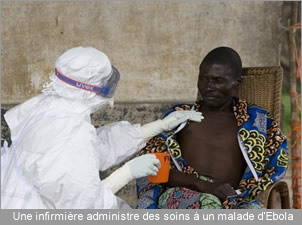Publish Date: Aug 20, 2012
By Anne Mugisa And Ismael Kasooha
The Ministry of Health will send health experts to the Democratic Republic of Congo (DRC) to help them combat an outbreak of the deadly Ebola haemorrhagic fever there.
The ministry’s permanent secretary, Dr. Asuman Lukwago, said this was intended to prevent the disease from spilling over into Uganda, which is emerging from another Ebola epidemic.
By yesterday, reports indicated that one person had died of Ebola and three others were infected in northeastern Congo.
The outbreak is in Isiro, a busy town in the DRC’s Oriental province which shares a border with Uganda.
“We are just coming out of battling Ebola. We have to take all measures, including the possibility of sending a team there to help them stop it and ensuring that it does not spill over here,” Lukwago said yesterday.
“We usually co-operate with our neighbours as well as the international organisations when such outbreaks happen,” he added.
Experts say that the Ebola virus strain in the DRC outbreak is different from the one that Uganda has been battling over the past four weeks. They say there is no connection between the two strains of the disease whose mortality rates can go as high as 90%.
According to the experts, Congo’s health system is permanently stretched which could make preventing the disease from spreading from the town, a provincial transit point, a challenge.
Meanwhile, over 287 people who have been under surveillance after having been in contact with the victims of deadly disease have completed 21 without developing signs of the disease. The 21 days is the window period during which the symptoms of the disease appear after infection. http://www.newvision.co.ug/news/634322-ebola-uganda-sends-medical-team-to-congo.html
The Ministry of Health will send health experts to the Democratic Republic of Congo (DRC) to help them combat an outbreak of the deadly Ebola haemorrhagic fever there.
The ministry’s permanent secretary, Dr. Asuman Lukwago, said this was intended to prevent the disease from spilling over into Uganda, which is emerging from another Ebola epidemic.
By yesterday, reports indicated that one person had died of Ebola and three others were infected in northeastern Congo.
The outbreak is in Isiro, a busy town in the DRC’s Oriental province which shares a border with Uganda.
“We are just coming out of battling Ebola. We have to take all measures, including the possibility of sending a team there to help them stop it and ensuring that it does not spill over here,” Lukwago said yesterday.
“We usually co-operate with our neighbours as well as the international organisations when such outbreaks happen,” he added.
Experts say that the Ebola virus strain in the DRC outbreak is different from the one that Uganda has been battling over the past four weeks. They say there is no connection between the two strains of the disease whose mortality rates can go as high as 90%.
According to the experts, Congo’s health system is permanently stretched which could make preventing the disease from spreading from the town, a provincial transit point, a challenge.
Meanwhile, over 287 people who have been under surveillance after having been in contact with the victims of deadly disease have completed 21 without developing signs of the disease. The 21 days is the window period during which the symptoms of the disease appear after infection. http://www.newvision.co.ug/news/634322-ebola-uganda-sends-medical-team-to-congo.html









